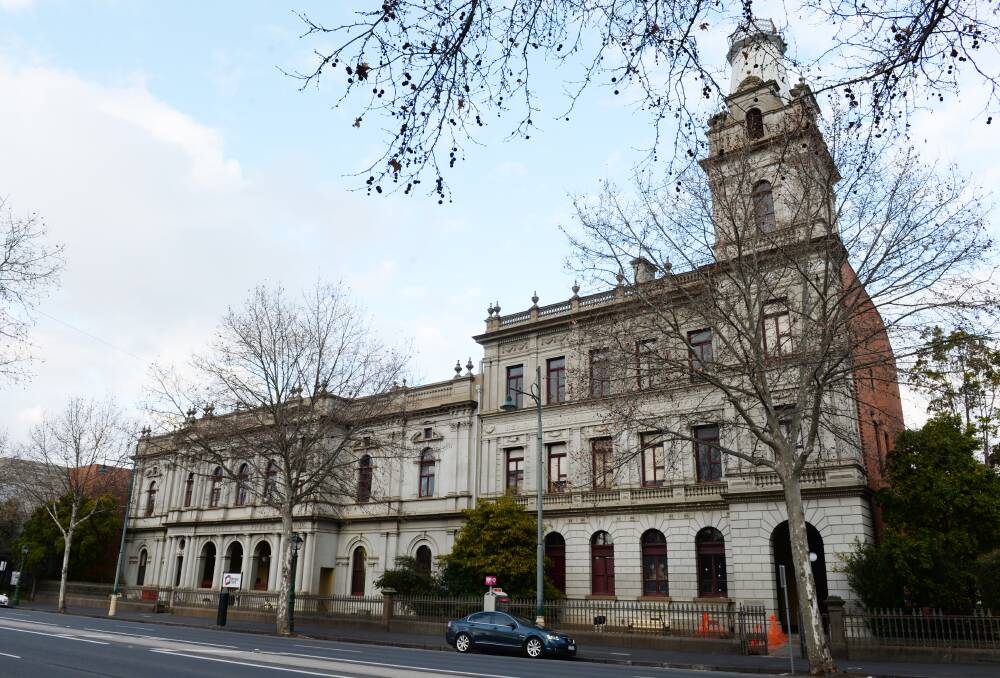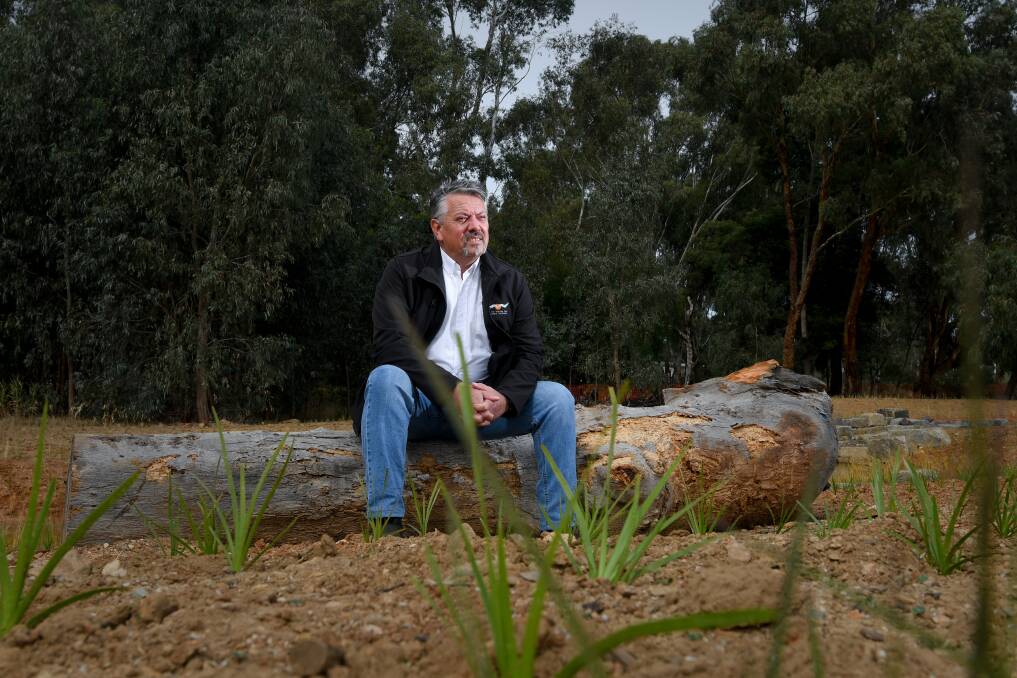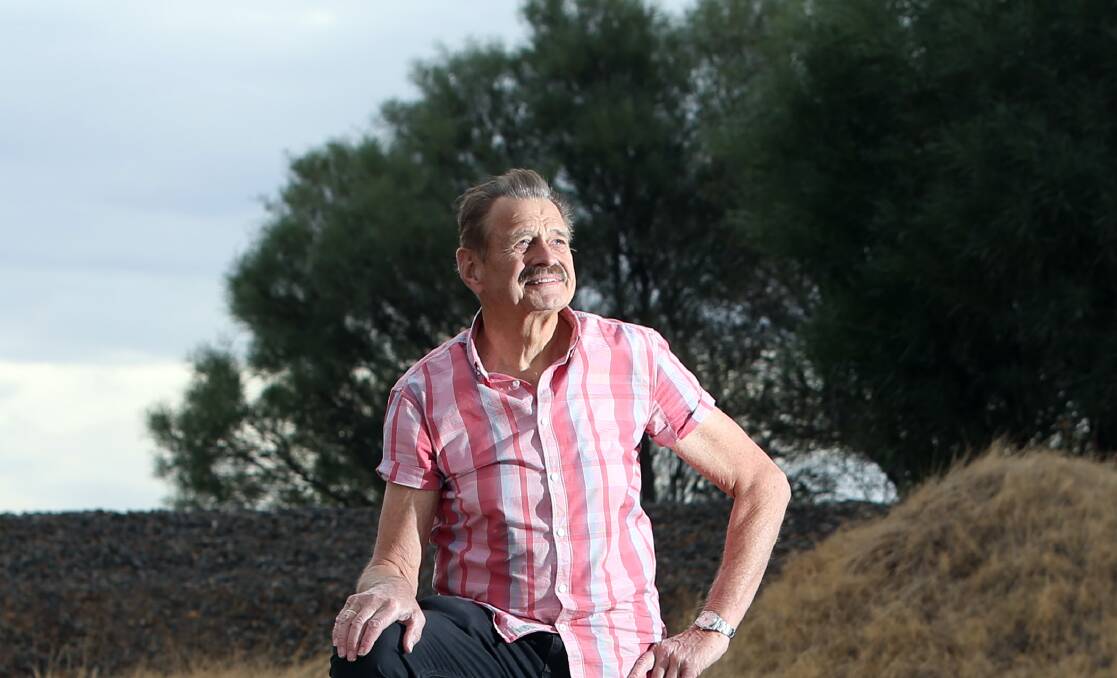
AN INDIGENOUS leader says it is time to give six Ancestors whose remains have vanished a proper burial.
Subscribe now for unlimited access.
or signup to continue reading
The comments come amid a Bendigo Advertiser investigation into what happened as a fabled natural history collection broke apart in the early 20th century.
The extensive collection was amassed in the late 19th century and fell into neglect over time.
More news:
The Advertiser has records of at least six Indigenous people's skulls donated to the now defunct School of Mines in the 1890s, which were stored in a collection at what is now Bendigo TAFE's McCrae Street campus.
Indigenous leader Rodney Carter asked anyone who knew where the skulls were to come forward, if they had not done so already.
"When you respect a human there is a ritual process. You bury them. That's something ancient that all of our cultures have done," the chief executive of the Dja Dja Wurrung Clans Aboriginal Corporation said.
"We would just want to respect the person and their loved one's wishes - even if they are not here either."
Rumours about what happened to the collection have abounded in Bendigo's history circles for decades.
Much of the collection and its records system have disappeared over the years, although some rock specimens ended up at another museum.

But at least two skulls were still at McCrae Street in 1960, when respected Bendigo historian James Lerk would sometimes see them in a cupboard.
"There were also various animals including a lion, stuffed parrots and animals, which we used as drawing models. These were part of the museum's past collection," he said.
The cupboard has been moved in the decades since the and Bendigo TAFE does not has custodianship of any historical items any more.
Some of the rock collection was donated to a Melbourne museum, other parts were dumped down mine shafts and more was slowly given away or sold.
Many Indigenous people's remains were treated disrespectfully
The Advertiser has sifted through historic records and confirmed that at least four people donated Aboriginal skulls to the museum in the 1890s.
It is unclear how any of those people obtained the human remains, though farmers, gold fossickers and others sometimes came across them while out in paddocks and along river banks.
Newspaper accounts of Aboriginal remains discoveries written in the late 19th and early 20th century suggest some were reburied.
Others were treated with far less respect.
Two boys found a skull in 1881 while rabbiting near Rochester. The "wags" decided to put it in someone's bed as a practical joke, an Advertiser report revealing the discovery noted.
"Next morning the skull was found battered into fragments in the back yard," it stated.
In another newspaper account, a lawyer used an Ancestor's skull as a prop in a 1907 inquest into a police officer's death, even marking it to imitate the injuries that the man had sustained in an accident.
For Mr Carter, knowing where the skulls have gone could be the first step in taking Ancestors' remains back to Country and giving them a culturally appropriate ceremony.
"Sadly, when they go into the hands of, say, someone who is not family, they generally get put aside or hidden," he said.
"That might be putting the remains in the back of a cupboard or burying them, which is sort of hoping for the problem to go away."

Mr Carter is part of a group hoping to win government funding for scientific research to discover where remains currently at Museums Victoria would have come from.
The bid took a hit this week when the Australian Research Council declined to forward the bid on to education minister Alan Tudge for consideration.
But it could eventually help experts identify more than 700 remains of unknown remains currently stored at Museums Victoria.
Museum staff this week ran searches of its databases for key words related to the former School of Mines collection after being approached by the Bendigo Advertiser.
They found no evidence the remains were in its collection.
The other major repository for remains is the Victorian Aboriginal Heritage Council.
It has 2000 cases on file, many of which have been amassed after 2016 reforms to replace universities, museums and other public entities with Traditional owners as custodians of remains.
The Aboriginal Heritage Council is bound by confidentiality agreements and cannot confirm any remains exist unless Traditional Owners make a formal request for information, then share it with others.
If the six Ancestors' remains are now registered, it is possible the details are not yet entirely understood, given the rapid expansion of the council's files in recent years, and that Mr Carter did not know of their existence until contacted by the Bendigo Advertiser.
Mr Carter happens to chair the Aboriginal Heritage Council's board, as well as lead the DDWCAC.
It is also possible the remains are still in a member of the public's hands, and that those people are not aware that they must report and transfer Indigenous people's remains to the Aboriginal Heritage Council.
If someone does have the skulls, it is time to give them back to Traditional Owners, a spokesperson for the Aboriginal Heritage Council said.
"The 1980s saw Aboriginal Ancestors start to return to rest on Country. But the journey is by no means complete and there are many more of our Ancestors still to come home," they said.
Know more? Contact journalist Tom O'Callaghan at tom.ocallghan@bendigoadvertiser.com.au
Witness saw rest of museum's collection shrink firsthand
Meanwhile, more details have emerged about the ways the School of Mine's natural history collection broke apart.
Much of it was willingly sold off through much of the 20th century when people stopped frequenting the museum.
James Lerk saw the disintegration of the museum's collection first hand and in either 1955 or '56 - he cannot recall exactly when - took home small rock specimens that the school of mines was not interested in keeping.
"They were just laying in a corridor," he said.

The corridor was known as "assay alley" because of the amount of rock specimens lining the floor, Mr Lerk said.
The specimens had been tipped out of glass casings to make room for teaching operations in other parts of the campus.
"When I was attending the Bendigo Junior Technical School, items from the natural history collection in the form of stuffed birds were being sold off at the annual fete," Mr Lerk said.
"I purchased for 2/6 a pair of cormorants they were on top of my wardrobe looking down at me for years."
By the 1950s, the museum that had housed the collection was closed.
Other pieces were simply thrown out.
Ethnographic material from a building's attic being tossed three storeys down into a lane way in 1959, destined for the White Hills rubbish tip.
"I rescued some items and took them home. A few years back, I donated a redgum woomera [a tool used in spear throwing] back to the Dja Dja Wurrung organisation in East Bendigo," Mr Lerk said.
Mr Lerk said the dodo that was reputedly part of the collection was long-gone by the time he arrived.
But a stuffed Tasmanian tiger was still there.
"I only saw it once, from memory. The tail had broken off and it was very much looking the worse for wear," Mr Lerk said.
The Advertiser is yet to confirm when - or how many - Tasmanian tigers were donated to the museum, but can confirm one was a subject of a Bendigo Science Science Society public lecture in 1892.
The same record noted that the museum was doing its best to procure specimens of animals believed to be going extinct.
Know more? Contact journalist Tom O'Callaghan at tom.ocallghan@bendigoadvertiser.com.au
Our journalists work hard to provide local, up-to-date news to the community. This is how you can continue to access our trusted content:
- Bookmark bendigoadvertiser.com.au/
- Make sure you are signed up for our breaking and regular headlines newsletters
- Follow us on Twitter: twitter.com/BgoAddy
- Follow us on Instagram instagram.com/bendigoadvertiser/
- Follow us on Google News


